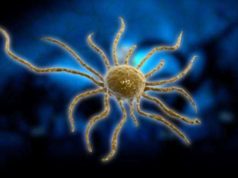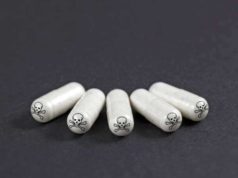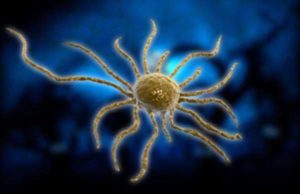
What is Paclitaxel?
Paclitaxel is a mitotic inhibitor applied to cancer patients to combat the disease. Paclitaxel was discovered in a U.S. National cancer Institute program at the Research Triangle Organization. The drug is derived from the bark of the Pacific yew tree. When it was initially developed commercial—by Bristol-Myers Squibb—the drug was given the generic name TAXOL. In this formation, Paclitaxel is dissolved in etahnol and Cremophor EL. A revised formulation, where Paclitaxel is adhered with albumin is sold under the generic name Abraxane.
Currently, Paclitaxel is used to treat patients with ovarian, lung, breast neck and head cancer. Paclitaxel is also used to prevent restenosis. The drug stabilizes microtubules and as a result, interferes with the natural breakdown of microtubules during cellular division. When combined with docetaxel, Paclitaxel forms the drug category of the taxanes.
While offering significant improvement in patient care, Paclitaxel is regarded as a relatively controversial chemotherapy drug. Original concern over the drug stems from the environmental impact of its source—Paclitaxel is no longer used from the Pacific yew tree. Moreover, the assignment of rights and the name itself were the subject of Congressional hearings and public debate.
As a taxane—compounds that are found in natural sources—Paclitaxel attempts to prevent the traditional progression of cell division, making cells unable to divide into sibling structures. Research suggests that Paclitaxel induces a programmed cell termination or apoptosis.
Paclitaxel was approved by the United States Food and Drug Administration during the summer of 1992 for the treatment of lung, ovarian and breast cancer. Paclitaxel is also used to combat head and neck cancer, as well as small cell lung cancers and bladder cancers. Paclitaxel is also under investigation for mesothelioma treatment. To fight mesothelioma cancer, Paclitaxel is combined with cisplatin—the platinum-containing chemo drug. Paclitaxel is prescribed worldwide and is applied through an IV once every 2 or 3 weeks.
Paclitaxel Side Effects:
Common side effects associated with Paclitaxel include: loss of appetite, change in taste, vomiting, nausea, brittle or thinning hair, pain in the arms, legs and joints, changes in the colors of finger and toe nails and tingling in the patient’s hands and toes. More severe side effects attached to Paclitaxel include: unusual bleeding and bruising, dizziness, difficulty swallowing, severe exhaustion, skin rash, female infertility, facial flushing, explosive diarrhea, persistent cough and extreme fatigue. The majority of these side effects are related with the excipient used. Allergies to drugs such as teniposide, polyoxyethylated and cyclosporine indicate an increased risk of adverse side effects of Paclitaxel. Before Paclitaxel is administered, the patient will receive a small dose of Dexamethasone to mitigate some of these adverse side effects. Moreover, an application of Leuprolide may prevent—according to mice studies—ovarian damage.
How does Paclitaxel Work?
Paclitaxel-treated cells are targeted for defects in their spindle assembly, chromosome segregation and cellular division. Dissimilar to other tubulin-targeting drugs that inhibit microtubule assembly, Paclitaxel stabilizes the microtubule polymer and shields to from detachment or damage. As a result, chromosomes are not able to achieve a metaphase spindle configuration. This mechanism blocks the progression of mitosis and a prolonged activation of the mitotic checkpoint triggers instability or a reversion to the G-phase of the cycle without incurring cellular division.
Paclitaxel’s ability to inhibit spindle function is typically attributed to its suppression of microtubule dynamics; however, recent studies have shown that suppression of dynamics takes place at concentrations that are ruled significantly lower than those required to block mitosis from occurring. At higher therapeutic concentrations, Paclitaxel will appear to suppress microtubule detachment—this process is typically activated during mitosis. The adhering site for v is identified as being on the beta-tubulin sub unit.
With regards to clinical use, Paclitaxel is approved in the United Kingdom for breast, lung and ovarian cancers. The bulk of oncologists recommend that Paclitaxel should be used as a second-line treatment for ovarian cancers.
Aside from its clinical use, Paclitaxel is used in a number of biomedical and biological research experiments as a microtubule stabilizer. In tests involving microtubules, including motility assays, scientists typically rely on Paclitaxel to maintain a microtubule integrity only in the absence of several nucleating factors and other stabilizing elements located in the cell. For instance, the drug is used in vitro tests of drugs that attempt to alter the behavior of motor proteins or for the clinical examinations of mutated motor proteins. In rare cases, Paclitaxel is used for in vivo examinations; the drug may be fed to test organisms (mice or fruit flies) or injected into cells to inhibit microtubule fragmentation or to increase the amount of microtubules in the cell.
Paclitaxel History of Clinical Trials:
Paclitaxel Phase I clinical trials began in the Spring of 1984; the decision to advance to stage clinical trials was affirmed later in the year. Subsequent and larger clinical trials to test Paclitaxel required more bark. Although 12,000 pounds of bark was taken from the environment, it was recognized, in 1986, that the demand for Paclitaxel might be substantial and that an excess of 60,000 pounds of bark was required as a minimum. This large amount brought several environmental concerns to the forefront, specifically regarding the impact on the yew population.
The first public reports from phase II trials were released in May of 1998 and showed a tremendous effect in melanoma patients and a fantastic response at a rate of 30% for patients suffering from ovarian cancer. At this stage in clinical trials, several oncologists and leaders in the medicine community, calculated the synthesis of enough Paclitaxel to treat melanoma and ovarian cancer cases in the United states would require the destruction of 360,000 trees per year. For the first time in the drug’s existence, serious consideration was given concerning the problem of supply.
In response to the supply problem, the National Cancer Institute sough association with a pharmaceutical company to secure funding for the further collection of raw materials, the funding needed to pay for a large proportion of clinical trials and the ability to isolate Taxol. Only 4 companies responded to the NCI’s pleae, including the American giant Bristol-Myers Squibb. In 1990, Bristol-Meyers applied to trademark the name taxol as TAXOL. During this time, Paclitaxel replaced taxol as the generic name of the compound.




























